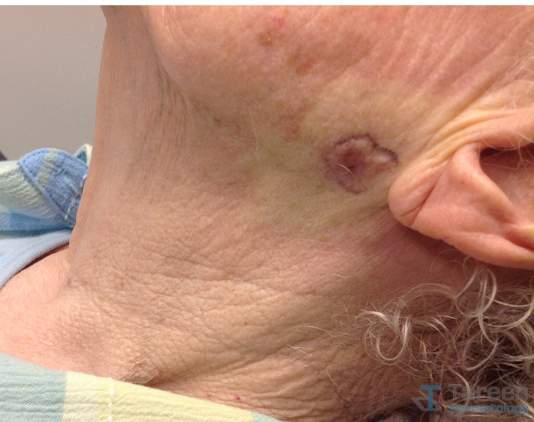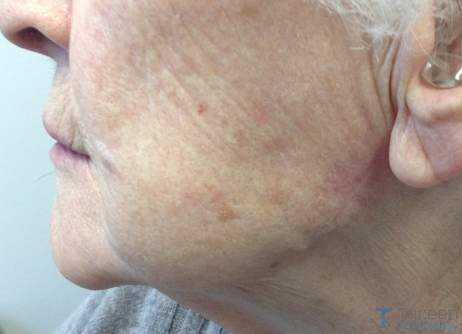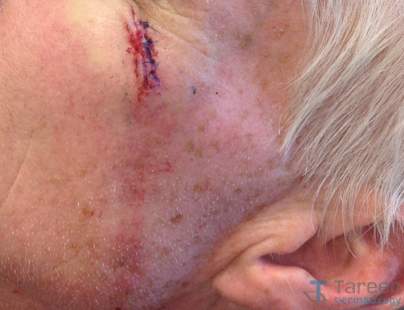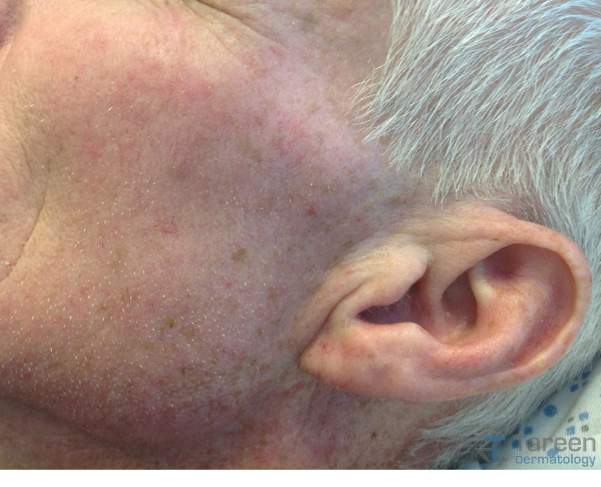Mohs surgery is a specialized type of surgery developed by Dr. Frederic Mohs in the early 1940s. Dr. Mohs recognized that a skin cancer often resembles a “tip of the iceberg” with more skin cancer cells growing downward and outward into the skin, like the roots of a tree. These “roots” are not visible with the naked eye, but can be seen under a microscope. Mohs Micrographic Surgery is a highly specialized and precise treatment for skin cancer in which the cancer is removed in stages, one tissue layer at a time. It is an outpatient procedure. This insures the highest rate of cure with the smallest amount of tissue removed. Dr. Mohiba Tareen, who completed a year-long procedural dermatology fellowship AFTER her 3 year dermatology residency at Columbia University, has specialized training in Mohs surgery.
What Is It?
Mohs surgery is a highly effective way of removing skin cancers. Once a tissue layer is removed, the edges are marked with specially colored dyes, and a map of the specimen is created.
The tissue is then processed and carefully examined under the microscope so that any microscopic roots of the cancer can be precisely identified and mapped.
When cancer cells are seen, an additional tissue layer is removed only in areas where the cancer is still present, leaving normal skin intact. This saves as much normal, healthy skin as possible – so this is an excellent option for skin cancers on the face. Once the cancer has been removed, options for repair of the wound, include natural healing (granulation), stitching the wound together by a side-to-side closure, or using a skin flap or graft.
Watch here as Dr. Mohiba Tareen and Hannah Dahl, PA-C discuss Mohs Surgery.
How does Mohs surgery work?
Once a tissue layer is removed, the edges are marked with specially colored dyes, creating a map of the specimen. The tissue is then processed and carefully examined under the microscope so that any microscopic roots of the cancer can be precisely identified and mapped. When cancer cells are seen, an additional tissue layer is removed only in areas where the cancer is still present, leaving normal skin intact. This saves as much normal, healthy skin as possible. Once the cancer has been removed, the Mohs surgeon will explain options for repair of the wound, including natural healing (granulation), stitching the wound together by a side-to-side closure, or using a skin flap or graft. For very deep or large tumors that may require repair in the operating room or patient may be referred to a plastic surgeon. We have an in-house plastic surgeon, Dr. Matthew Camp on staff to help serve our patients with these needs.
FAQS
Not all skin cancer requires Mohs surgery. Criteria for Mohs are stringent and include the following:
- The skin cancer is in an area where it is important to preserve healthy tissue for maximum functional and cosmetic result, such as eyelids, nose, ears, lips, other critical facial areas, as well as fingers, toes and genitals
- The skin cancer was treated previously and has come back
- Scar tissue exists in the area of the skin cancer
- The skin cancer is large
- The edges of the skin cancer cannot be clearly defined
- The skin cancer is growing rapidly or uncontrollably
The skin cancer is of an aggressive subtype




